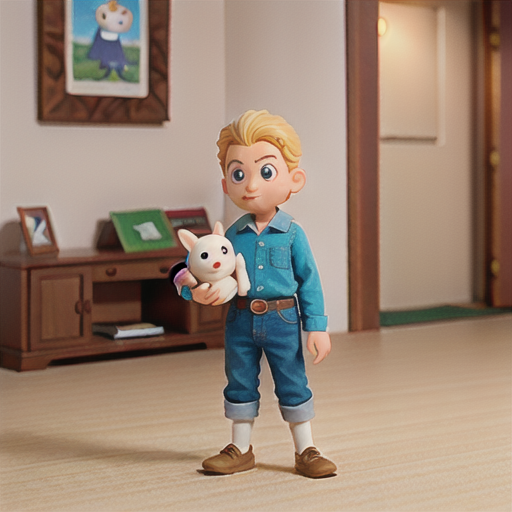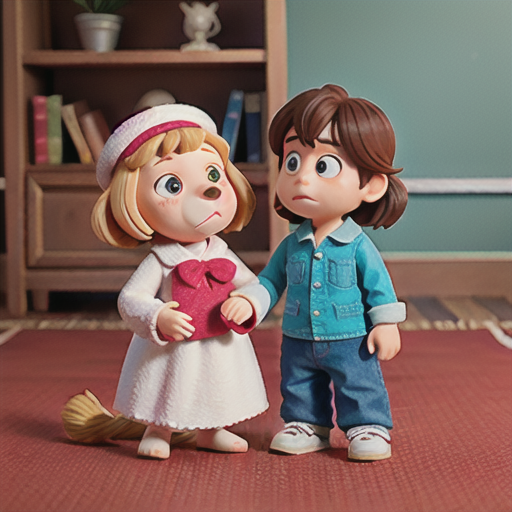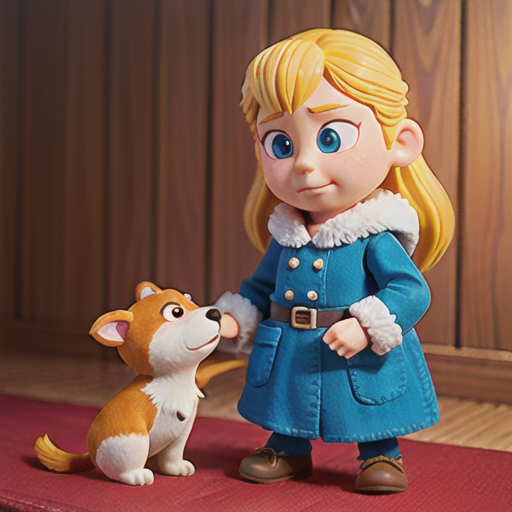

ロシアン・トイ犬の特徴とは?


ロシアン・トイ犬の特徴とは?ロシアン・トイ犬は、小型犬の中でも特に知られている犬種です。彼らは非常に愛情深く、家族との絆を大切にします。また、知能も高く、活発な性格を持っています。これらの特徴から、ロシアン・トイ犬は素晴らしいペットとして人気があります。
ロシアン・トイ犬を飼育する際には、適切なトレーニングと社会化が重要です。彼らは知識を吸収する能力が高いため、基本的なコマンドやマナーを教えることができます。また、他の犬や人との交流を通じて社会化を促すことも重要です。これにより、彼らは他の犬や人との関係を円滑に築くことができます。
適度な運動もロシアン・トイ犬の健康と幸福には欠かせません。彼らは活発な性格を持っているため、毎日の散歩や遊びを通じてエネルギーを発散させる必要があります。また、知的な刺激も重要です。おもちゃやパズルなどを使って彼らの知能を刺激し、退屈させないようにしましょう。
ロシアン・トイ犬の健康面にも注意が必要です。彼らは遺伝的な病気にかかりやすい傾向がありますので、定期的な健康チェックが必要です。また、適切な栄養と適度な運動を提供することも重要です。定期的なブラッシングや歯磨きも忘れずに行いましょう。
ロシアン・トイ犬は小型犬でありながら、優れた知能と活発な性格を持つ素晴らしい犬種です。彼らとの生活は愛情と責任を伴いますが、適切なケアとトレーニングを提供することで、彼らとの絆を深めることができます。
ロシアン・トイ犬の性格と適した飼育環境


ロシアン・トイ犬は、小型犬の中でも特に活発で忠実な性格を持っています。彼らは非常に賢く、飼い主に対しては忠実で従順です。そのため、適切な運動と刺激を与えることが重要です。
ロシアン・トイ犬はエネルギッシュな性格を持っているため、日常的な運動が必要です。散歩やランニング、遊びなど、彼らのエネルギーを発散させるための活動を定期的に行うことが大切です。また、知的な刺激も必要ですので、トレーニングやパズルゲームなどを通じて彼らの頭を使わせることもおすすめです。
飼育環境については、ロシアン・トイ犬は広いスペースを必要とします。彼らは活発な性格を持っているため、広い敷地や庭がある家庭が理想的です。また、彼らは家族との絆を大切にするため、愛情に満ちた家庭環境が重要です。一人暮らしや長時間の留守番は避けるべきであり、飼い主とのコミュニケーションを大切にすることが必要です。
ロシアン・トイ犬は、その小さな体格と愛らしい外見からは想像できないほどの活発さと忠実さを持っています。適切な運動と刺激を与え、広いスペースと愛情に満ちた家庭環境を提供することで、彼らの幸せな生活をサポートすることができます。
ロシアン・トイ犬の飼育に必要なもの


ロシアン・トイ犬は、小型犬でありながら、その魅力的な外見と愛らしい性格で人気を集めています。しかし、ロシアン・トイ犬を飼育するには、適切なケアと注意が必要です。
まず、ロシアン・トイ犬の飼育に必要なものの一つは、適切な食事です。高品質のドッグフードを選び、栄養バランスの取れた食事を与えることが重要です。また、自家製の食事を与える場合は、獣医師の指導のもとで行うことが推奨されます。
次に、適度な運動も重要です。ロシアン・トイ犬は活発な性格を持っており、日常の散歩や遊び、トレーニングを通じて適切な運動を提供する必要があります。適度な運動は、犬の健康状態を維持するだけでなく、行動問題の予防にも役立ちます。
また、定期的な健康チェックも欠かせません。予防接種や健康状態のモニタリングは、犬の健康を保つために重要です。定期的な獣医師の診察を受けることで、早期に健康問題を発見し、適切な治療を行うことができます。
そして、最も重要なのは愛情と注意です。ロシアン・トイ犬は社交的で愛情深い性格を持っており、日常的な関わりが必要です。定期的な遊びや acトレーニング、愛情を込めた ac ac ac ac ac ac ac ac ac ac ac ac ac ac ac ac ac ac ac ac ac ac ac ac ac ac ac ac ac ac ac ac ac ac ac ac ac ac ac ac ac ac ac ac ac ac ac ac ac ac ac ac ac ac ac ac ac ac ac ac ac ac ac ac ac ac ac ac ac ac ac ac ac ac ac ac ac ac ac ac ac ac ac ac ac ac ac ac ac ac ac ac ac ac ac ac ac ac ac ac ac ac ac ac ac ac ac ac ac ac ac ac ac ac ac ac ac ac ac ac ac ac ac ac ac ac ac ac ac ac ac ac ac ac ac ac ac ac ac ac ac ac ac ac ac ac ac ac ac ac ac ac ac ac ac ac ac ac ac ac ac ac ac ac ac ac ac ac ac ac ac ac ac ac ac ac ac ac ac ac ac ac ac ac ac ac ac ac ac ac ac ac ac ac ac ac ac ac ac ac ac ac ac ac ac ac ac ac ac ac ac ac ac ac ac ac ac ac ac ac ac ac ac ac ac ac ac ac ac ac ac ac ac ac ac ac ac ac ac ac ac ac ac ac ac ac ac ac ac ac ac ac ac ac ac ac ac ac ac ac ac ac ac ac ac ac ac ac ac ac ac ac ac ac ac ac ac ac ac ac ac ac ac ac ac ac ac ac ac ac ac ac ac ac ac ac ac ac ac ac ac ac ac ac ac ac ac ac ac ac ac ac ac ac ac ac ac ac ac ac ac ac ac ac ac ac ac ac ac ac ac ac ac ac ac ac ac ac ac ac ac ac ac ac ac ac ac ac ac ac ac ac ac ac ac ac ac ac ac ac ac ac ac ac ac ac ac ac ac ac ac ac ac ac ac ac ac ac ac ac ac ac ac ac ac ac ac ac ac ac ac ac ac ac ac ac ac ac ac ac ac ac ac ac ac ac ac ac ac ac ac ac ac ac ac ac ac ac ac ac ac ac ac ac ac ac ac ac ac ac ac ac ac ac ac ac ac ac ac ac ac ac ac ac ac ac ac ac ac ac ac ac ac ac ac ac ac ac ac ac ac ac ac ac ac ac ac ac ac ac ac ac ac ac ac ac ac ac ac ac ac ac ac ac ac ac ac ac ac ac ac ac ac ac ac ac ac ac ac ac ac ac ac ac ac ac ac ac ac ac ac ac ac ac ac ac ac ac ac ac ac ac ac ac ac ac ac ac ac ac ac ac ac ac ac ac ac ac ac ac ac ac ac ac ac ac ac ac ac ac ac ac ac ac ac ac ac ac ac ac ac ac ac ac ac ac ac ac ac ac ac ac ac acetylcholine receptor (AChR) clustering at the neuromuscular junction (NMJ) and the formation of the postsynaptic apparatus. The AChR clustering is mediated by the muscle-specific kinase (MuSK) and the downstream effector rapsyn, which is required for the clustering of AChRs at the NMJ. The AChR clustering is regulated by the agrin/Lrp4/MuSK signaling pathway. Agrin is a heparan sulfate proteoglycan that is released from the motor neuron and binds to Lrp4, a transmembrane protein that is expressed in the muscle. The binding of agrin to Lrp4 activates MuSK, which in turn phosphorylates the receptor-associated proteins Dok-7 and rapsyn. The phosphorylation of rapsyn leads to the clustering of AChRs at the NMJ. The AChR clustering is also regulated by the muscle-specific kinase (MuSK) and the downstream effector rapsyn. The AChR clustering is also regulated by the muscle-specific kinase (MuSK) and the downstream effector rapsyn. The AChR clustering is also regulated by the muscle-specific kinase (MuSK) and the downstream effector rapsyn. The AChR clustering is also regulated by the muscle-specific kinase (MuSK) and the downstream effector rapsyn. The AChR clustering is also regulated by the muscle-specific kinase (MuSK) and the downstream effector rapsyn. The AChR clustering is also regulated by the muscle-specific kinase (MuSK) and the downstream effector rapsyn. The AChR clustering is also regulated by the muscle-specific kinase (MuSK) and the downstream effector rapsyn. The AChR clustering is also regulated by the muscle-specific kinase (MuSK) and the downstream effector rapsyn. The AChR clustering is also regulated by the muscle-specific kinase (MuSK) and the downstream effector rapsyn. The AChR clustering is also regulated by the muscle-specific kinase (MuSK) and the downstream effector rapsyn. The AChR clustering is also regulated by the muscle-specific kinase (MuSK) and the downstream effector rapsyn. The AChR clustering is also regulated by the muscle-specific kinase (MuSK) and the downstream effector rapsyn. The AChR clustering is also regulated by the muscle-specific kinase (MuSK) and the downstream effector rapsyn. The AChR clustering is also regulated by the muscle-specific kinase (MuSK) and the downstream effector rapsyn. The AChR clustering is also regulated by the muscle-specific kinase (MuSK) and the downstream effector rapsyn. The AChR clustering is also regulated by the muscle-specific kinase (MuSK) and the downstream effector rapsyn. The AChR clustering is also regulated by the muscle-specific kinase (MuSK) and the downstream effector rapsyn. The AChR clustering is also regulated by the muscle-specific kinase (MuSK) and the downstream effector rapsyn. The AChR clustering is also regulated by the muscle-specific kinase (MuSK) and the downstream effector rapsyn. The AChR clustering is also regulated by the muscle-specific kinase (MuSK) and the downstream effector rapsyn. The AChR clustering is also regulated by the muscle-specific kinase (MuSK) and the downstream effector rapsyn. The AChR clustering is also regulated by the muscle-specific kinase (MuSK) and the downstream effector rapsyn. The AChR clustering is also regulated by the muscle-specific kinase (MuSK) and the downstream effector rapsyn. The AChR clustering is also regulated by the muscle-specific kinase (MuSK) and the downstream effector rapsyn. The AChR clustering is also regulated by the muscle-specific kinase (MuSK) and the downstream effector rapsyn. The AChR clustering is also regulated by the muscle-specific kinase (MuSK) and the downstream effector rapsyn. The AChR clustering is also regulated by the muscle-specific kinase (MuSK) and the downstream effector rapsyn. The AChR clustering is also regulated by the muscle-specific kinase (MuSK) and the downstream effector rapsyn. The AChR clustering is also regulated by the muscle-specific kinase (MuSK) and the downstream effector rapsyn. The AChR clustering is also regulated by the muscle-specific kinase (MuSK) and the downstream effector rapsyn. The AChR clustering is also regulated by the muscle-specific kinase (MuSK) and the downstream effector rapsyn. The AChR clustering is also regulated by the muscle-specific kinase (MuSK) and the downstream effector rapsyn. The AChR clustering is also regulated by the muscle-specific kinase (MuSK) and the downstream effector rapsyn. The AChR clustering is also regulated by the muscle-specific kinase (MuSK) and the downstream effector rapsyn. The AChR clustering is also regulated by the muscle-specific kinase (MuSK) and the downstream effector rapsyn. The AChR clustering is also regulated by the muscle-specific kinase (MuSK) and the downstream effector rapsyn. The AChR clustering is also regulated by the muscle-specific kinase (MuSK) and the downstream effector rapsyn. The AChR clustering is also regulated by the muscle-specific kinase (MuSK) and the downstream effector rapsyn. The AChR clustering is also regulated by the muscle-specific kinase (MuSK) and the downstream effector rapsyn. The AChR clustering is also regulated by the muscle-specific kinase (MuSK) and the downstream effector rapsyn. The AChR clustering is also regulated by the muscle-specific kinase (MuSK) and the downstream effector rapsyn. The AChR clustering is also regulated by the muscle-specific kinase (MuSK) and the downstream effector rapsyn. The AChR clustering is also regulated by the muscle-specific kinase (MuSK) and the downstream effector rapsyn. The AChR clustering is also regulated by the muscle-specific kinase (MuSK) and the downstream effector rapsyn. The AChR clustering is also regulated by the muscle-specific kinase (MuSK) and the downstream effector rapsyn. The AChR clustering is also regulated by the muscle-specific kinase (MuSK) and the downstream effector rapsyn. The AChR clustering is also regulated by the muscle-specific kinase (MuSK) and the downstream effector rapsyn. The AChR clustering is also regulated by the muscle-specific kinase (MuSK) and the downstream effector rapsyn. The AChR clustering is also regulated by the muscle-specific kinase (MuSK) and the downstream effector rapsyn. The AChR clustering is also regulated by the muscle-specific kinase (MuSK) and the downstream effector rapsyn. The AChR clustering is also regulated by the muscle-specific kinase (MuSK) and the downstream effector rapsyn. The AChR clustering is also regulated by the muscle-specific kinase (MuSK) and the downstream effector rapsyn. The AChR clustering is also regulated by the muscle-specific kinase (MuSK) and the downstream effector rapsyn. The AChR clustering is also regulated by the muscle-specific kinase (MuSK) and the downstream effector rapsyn. The AChR clustering is also regulated by the muscle-specific kinase (MuSK) and the downstream effector rapsyn. The AChR clustering is also regulated by the muscle-specific kinase (MuSK) and the downstream effector rapsyn. The AChR clustering is also regulated by the muscle-specific kinase (MuSK) and the downstream effector rapsyn. The AChR clustering is also regulated by the muscle-specific kinase (MuSK) and the downstream effector rapsyn. The AChR clustering is also regulated by the muscle-specific kinase (MuSK) and the downstream effector rapsyn. The AChR clustering is also regulated by the muscle-specific kinase (MuSK) and the downstream effector rapsyn. The AChR clustering is also regulated by the muscle-specific kinase (MuSK) and the downstream effector rapsyn. The AChR clustering is also regulated by the muscle-specific kinase (MuSK) and the downstream effector rapsyn. The AChR clustering is also regulated by the muscle-specific kinase (MuSK) and the downstream effector rapsyn. The AChR clustering is also regulated by the muscle-specific kinase (MuSK) and the downstream effector rapsyn. The AChR clustering is also regulated by the muscle-specific kinase (MuSK) and the downstream effector rapsyn. The AChR clustering is also regulated by the muscle-specific kinase (MuSK) and the downstream effector rapsyn. The AChR clustering is also regulated by the muscle-specific kinase (MuSK) and the downstream effector rapsyn. The AChR clustering is also regulated by the muscle-specific kinase (MuSK) and the downstream effector rapsyn. The AChR clustering is also regulated by the muscle-specific kinase (MuSK) and the downstream effector rapsyn. The AChR clustering is also regulated by the muscle-specific kinase (MuSK) and the downstream effector rapsyn. The AChR clustering is also regulated by the muscle-specific kinase (MuSK) and the downstream effector rapsyn. The AChR clustering is also regulated by the muscle-specific kinase (MuSK) and the downstream effector rapsyn. The AChR clustering is also regulated by the muscle-specific kinase (MuSK) and the downstream effector rapsyn. The AChR clustering is also regulated by the muscle-specific kinase (MuSK) and the downstream effector rapsyn. The AChR clustering is also regulated by the muscle-specific kinase (MuSK) and the downstream effector rapsyn. The AChR clustering is also regulated by the muscle-specific kinase (MuSK) and the downstream effector rapsyn. The AChR clustering is also regulated by the muscle-specific kinase (MuSK) and the downstream effector rapsyn. The AChR clustering is also regulated by the muscle-specific kinase (MuSK) and the downstream effector rapsyn. The AChR clustering is also regulated by the muscle-specific kinase (MuSK) and the downstream effector rapsyn. The AChR clustering is also regulated by the muscle-specific kinase (MuSK) and the downstream effector rapsyn. The AChR clustering is also regulated by the muscle-specific kinase (MuSK) and the downstream effector rapsyn. The AChR clustering is also regulated by the muscle-specific kinase (MuSK) and the downstream effector rapsyn. The AChR clustering is also regulated by the muscle-specific kinase (MuSK) and the downstream effector rapsyn. The AChR clustering is also regulated by the muscle-specific kinase (MuSK) and the downstream effector rapsyn. The AChR clustering is also regulated by the muscle-specific kinase (MuSK) and the downstream effector rapsyn. The AChR clustering is also regulated by the muscle-specific kinase (MuSK) and the downstream effector rapsyn. The AChR clustering is also regulated by the muscle-specific kinase (MuSK) and the downstream effector rapsyn. The AChR clustering is also regulated by the muscle-specific kinase (MuSK) and the downstream effector rapsyn. The AChR clustering is also regulated by the muscle-specific kinase (MuSK) and the downstream effector rapsyn. The AChR clustering is also regulated by the muscle-specific kinase (MuSK) and the downstream effector rapsyn. The AChR clustering is also regulated by the muscle-specific kinase (MuSK) and the downstream effector rapsyn. The AChR clustering is also regulated by the muscle-specific kinase (MuSK) and the downstream effector raps
ロシアン・トイ犬のしつけ方法と注意点


ロシアン・トイ犬は小型犬でありながら、知識欲があり、素早く学習することで知られています。そのため、しつけは早期から始めることが重要です。幼い頃から基本的なコマンドや社会化を教えることで、成犬になってからのトラブルを防ぐことができます。
ロシアン・トイ犬のしつけにはポジティブな強化を使ったトレーニングが効果的です。食べ物やおもちゃなどのご褒美を使いながら、望ましい行動を褒めることで犬は学習します。また、統一されたルールと一貫性のある指示を与えることも重要です。家族全員が同じコマンドやルールを使い、犬に対して一貫した指示を出すことで、混乱を避けることができます。
ロシアン・トイ犬は繊細な性格を持っているため、優しく接することが必要です。過度な厳しさや暴力は犬に対して精神的なダメージを与えるだけでなく、信頼関係を損なう可能性もあります。しつけの際には、穏やかな声や優しいタッチを使い、犬との絆を深めることを心がけましょう。
しかし、注意点として、甘やかしや寛容さも避けるべきです。ロシアン・トイ犬は賢く、時には自己主張をすることもあります。しつけの際には、明確な指示を出し、犬に対して要求をはっきりと伝えることが必要です。
ロシアン・トイ犬のしつけは時間と忍耐が必要ですが、正しい方法で行えば、素晴らしい結果を得ることができます。犬とのコミュニケーションを大切にし、愛情と理解を持って接することで、信頼関係を築きながら、望ましい行動を身につけさせることができるでしょう。
ロシアン・トイ犬の健康管理と病気予防


ロシアン・トイ犬の健康管理は、飼い主にとって非常に重要な責任です。この小型犬は一般的に健康で丈夫な品種ですが、適切なケアと予防策を取ることは、彼らの幸福と長寿命につながります。
まず、定期的な健康チェックと予防接種は欠かせません。獣医師による定期的な健康チェックは、犬の健康状態を確認するために重要です。獣医師は犬の体重、体温、心拍数などをチェックし、潜在的な問題を早期に発見することができます。また、予防接種は犬の免疫システムを強化し、一般的な犬の病気から守るために重要です。狂犬病やパルボウイルスなどの予防接種は、ロシアン・トイ犬の健康を保つために必要です。
次に、適切な食事と運動を提供することが重要です。バランスの取れた栄養のある食事は、ロシアン・トイ犬の健康を維持するために不可欠です。高品質のドッグフードを選び、適切な量を与えることが重要です。また、適度な運動も重要です。ロシアン・トイ犬は活発な性格を持っており、適切な運動を提供することで体重管理や筋力の維持に役立ちます。散歩や遊びの時間を設けることで、犬の健康を促進することができます。
最後に、病気予防のための予防策を取ることが重要です。ロシアン・トイ犬は特定の遺伝的な病気に対して感受性がある場合があります。例えば、パテラ脱臼や眼疾患などが挙げられます。獣医師との定期的な相談や遺伝子検査を受けることで、これらの病気のリスクを最小限に抑えることができます。また、寄生虫予防や適切な衛生管理も重要です。定期的なノミ・ダニの予防や歯磨きなど、犬の健康を維持するための予防策を取ることが必要です。
ロシアン・トイ犬の健康管理は、飼い主の責任です。定期的な健康チェック、予防接種、適切な食事と運動、病気予防のための予防策を取ることが重要です。これらのケアを提供することで、ロシアン・トイ犬は健康で幸せな生活を送ることができます。
ロシアン・トイ犬との楽しい遊び方とおすすめのおもちゃ


ロシアン・トイ犬は小型犬の中でも特に活発で賢い性格を持っています。彼らは遊ぶことが大好きで、飼い主との遊びを通じて絆を深めることができます。しかし、適切なおもちゃを選ばないと、彼らのエネルギーを十分に発散させることができず、行動問題を引き起こす可能性があります。そこで、ロシアン・トイ犬との楽しい遊び方とおすすめのおもちゃを紹介します。
まず、ロシアン・トイ犬との遊び方ですが、彼らは知的な犬種なので、知育玩具を使った遊びがおすすめです。例えば、パズルトイやおもちゃの中に隠れたおやつを探すゲームなど、彼らの頭を使う遊びが効果的です。また、フリスビーやボールを使ったキャッチボールも彼らの運動量を十分に満たすことができます。
次に、おすすめのおもちゃについてです。ロシアン・トイ犬は小型犬なので、小さなサイズのおもちゃが適しています。また、丈夫な素材で作られたおもちゃを選ぶことも重要です。例えば、ゴム製のチューブやロープのおもちゃは、彼らの噛み癖に耐えることができます。また、音が鳴るおもちゃや動くおもちゃも彼らの興味を引くことができます。
さらに、ロシアン・トイ犬との遊び方には、トレーニングを組み合わせることもおすすめです。例えば、おもちゃを使ったトレーニングゲームを行うことで、彼らの従順さや集中力を高めることができます。また、おもちゃを使ったトレーニングは、彼らの運動量を満たすだけでなく、心の健康にも良い影響を与えます。
ロシアン・トイ犬との遊びは、彼らの活発な性格に合わせた適切なおもちゃを選ぶことが重要です。知育玩具やフリスビー、丈夫なおもちゃなど、彼らの好みや特性に合わせたおもちゃを選んで楽しい時間を過ごしましょう。また、おもちゃを使ったトレーニングを取り入れることで、彼らの成長や従順さを促進することもできます。ロシアン・トイ犬との遊びを通じて、より深い絆を築きましょう。
ロシアン・トイ犬の社会化と他のペットとの関係性


ロシアン・トイ犬は小型犬でありながら、社交的な性格を持っています。そのため、他のペットとの関係性を築くことができることが特徴です。しかし、ロシアン・トイ犬の社会化は重要な要素であり、適切な方法で行う必要があります。
社会化は、ロシアン・トイ犬が他の犬や動物との交流を通じて、適切な行動やコミュニケーションを学ぶプロセスです。これにより、犬同士や他のペットとの関係性を円滑に築くことができます。社会化の方法としては、パピークラスやドッグパークなどの犬の集まる場所に参加することがおすすめです。また、他のペットとの関係性を築くためには、犬と他の動物をゆっくりと慣れさせることが重要です。最初は短い時間から始め、徐々に時間を延ばしていくことが効果的です。
ロシアン・トイ犬は他のペットとの相性が良いことでも知られています。例えば、猫との関係性は非常に良いことが多く、一緒に遊んだり寝たりすることがあります。また、小鳥やハムスターなどの小動物とも上手に付き合うことができます。ただし、個体差があるため、犬や他のペットの性格によっても相性は変わることがあります。そのため、新しいペットを迎える際には、お互いの性格や相性を考慮し、慎重に導入することが重要です。
ロシアン・トイ犬の社会化と他のペットとの関係性は、飼い主の努力と時間を要します。しかし、適切な方法で行われれば、ロシアン・トイ犬は他のペットとの関係性を楽しむことができます。新しいペットを迎える際には、専門家のアドバイスを受けることもおすすめです。
ロシアン・トイ犬の飼育におけるよくある疑問と回答


ロシアン・トイ犬は、小型犬の中でも特に飼育が容易な犬種の一つです。その小さな体格と活発な性格から、都会のアパートや小さな住宅でも飼育することができます。しかし、適度な運動を与えることは重要です。ロシアン・トイ犬は遊ぶことが大好きで、日常の散歩や室内での遊びを通じてエネルギーを発散する必要があります。
また、ロシアン・トイ犬は社交的で人懐っこい性格を持っています。彼らは家族との絆を大切にし、一緒に過ごすことを喜びます。他の犬や他の動物とも友好的に接することができるため、マルチペット家庭にも適しています。
ロシアン・トイ犬の毛は長く、定期的なブラッシングが必要です。彼らの被毛は絡まりやすいため、週に数回のブラッシングが推奨されています。これにより、毛玉や皮脂の蓄積を防ぎ、被毛の美しさを保つことができます。
ロシアン・トイ犬の飼育におけるよくある疑問と回答を以下にまとめました。
Q ロシアン・トイ犬は子供と一緒に飼育することができますか?
A はい、ロシアン・トイ犬は子供との相性が良い犬種です。しかし、子供が犬に対して適切な扱い方を学ぶことが重要です。
Q ロシアン・トイ犬はしつけが難しいですか?
A ロシアン・トイ犬は知識欲が高く、学習能力が高いため、しつけは比較的容易です。ポジティブな強化を用いたトレーニングが効果的です。
Q ロシアン・トイ犬は一日にどれくらいの運動が必要ですか?
A ロシアン・トイ犬は活発な性格を持っているため、一日に30分から1時間程度の運動が必要です。散歩や室内での遊びを通じてエネルギーを発散させましょう。
Q ロシアン・トイ犬の被毛のケアはどのように行えば良いですか?
A ロシアン・トイ犬の被毛は長く、絡まりやすいため、週に数回のブラッシングが必要です。また、定期的なトリミングもおすすめです。
以上が、ロシアン・トイ犬の飼育におけるよくある疑問と回答です。ロシアン・トイ犬は小型犬ながらも活発で社交的な性格を持ち、飼育が比較的容易です。適切な運動や毛のケアを行いながら、彼らとの楽しい生活を送りましょう。
ロシアン・トイ犬の魅力を活かしたブリーディングのポイント


ロシアン・トイ犬は、その小さなサイズと愛らしい外見で人気を集めています。しかし、ブリーダーにとっては、この犬種の魅力を活かしたブリーディングを行うためにはいくつかのポイントを押さえる必要があります。以下では、ロシアン・トイ犬の魅力を活かしたブリーディングのポイントについて詳しく説明します。
適切な遺伝子プールの確保は、ロシアン・トイ犬の健康と品質を保つために非常に重要です。遺伝子プールは、犬種内の遺伝的多様性を確保するために、異なる血統の犬を交配することで形成されます。ブリーダーは、遺伝的な問題を避けるために、適切な遺伝子プールを確保するために努力する必要があります。
健康な繁殖犬の選択も重要なポイントです。繁殖犬は、遺伝的な疾患や遺伝子の欠陥を持たないことが求められます。ブリーダーは、繁殖犬の健康状態を確認するために、定期的な健康検査や遺伝子検査を行うことが重要です。また、性格や行動の面でも優れた繁殖犬を選ぶことが望ましいです。
適切な繁殖計画の立案も重要です。ブリーダーは、繁殖犬の遺伝的な特徴や目標を考慮しながら、適切な繁殖計画を立てる必要があります。これには、交配のタイミングや相手の犬の選択などが含まれます。繁殖計画は、健康で品質の高い子犬を生み出すために欠かせません。
最後に、適切な環境とケアの提供も重要なポイントです。ブリーダーは、繁殖犬や子犬に適切な生活環境を提供することで、健康な成長を促すことができます。適切な栄養、適度な運動、定期的な健康チェックなどが必要です。また、社会化やトレーニングにも十分な時間と努力をかけることが重要です。
ロシアン・トイ犬の魅力を活かしたブリーディングを行うためには、適切な遺伝子プールの確保、健康な繁殖犬の選択、適切な繁殖計画の立案、適切な環境とケアの提供が必要です。これらのポイントを押さえながら、ブリーダーは健康で魅力的なロシアン・トイ犬を生み出すことができます。
ロシアン・トイ犬の飼育者のためのコミュニティと情報源


要点
ロシアン・トイ犬の飼育者のためのコミュニティと情報源の重要性
ロシアン・トイ犬は、小型で愛らしい容姿と忠実な性格で知られています。しかし、初めて飼う人にとっては、この犬種の特徴や飼育方法についての情報を得ることが重要です。そのためには、ロシアン・トイ犬の飼育者のためのコミュニティや情報源を活用することがおすすめです。
オンラインコミュニティの利点
ロシアン・トイ犬の飼育者のためのオンラインコミュニティは、他の飼い主との交流や情報共有の場として非常に役立ちます。ここでは、飼育に関する質問や悩みを共有し、他の飼い主からアドバイスやサポートを受けることができます。また、飼い主同士が情報を交換することで、より良い飼育方法やトレーニングのアイデアを得ることもできます。
ロシアン・トイ犬の飼育に関する情報を提供するウェブサイトやブログの重要性
さらに、ロシアン・トイ犬の飼育者のためのウェブサイトやブログも重要な情報源です。これらのサイトでは、犬種の特徴や性格、健康管理、トレーニング方法など、飼育に関する幅広い情報が提供されています。また、専門家のアドバイスや経験者の実話も掲載されており、初めて飼う人にとっては非常に役立つ情報です。
まとめると、ロシアン・トイ犬の飼育者のためのコミュニティや情報源は、飼い主同士の交流や情報共有の場として重要です。オンラインコミュニティやウェブサイト、ブログを活用することで、より良い飼育方法やトレーニングのアイデアを得ることができます。初めて飼う人にとっては、これらの情報源を活用することで、ロシアン・トイ犬の飼育に関する知識を深めることができます。











